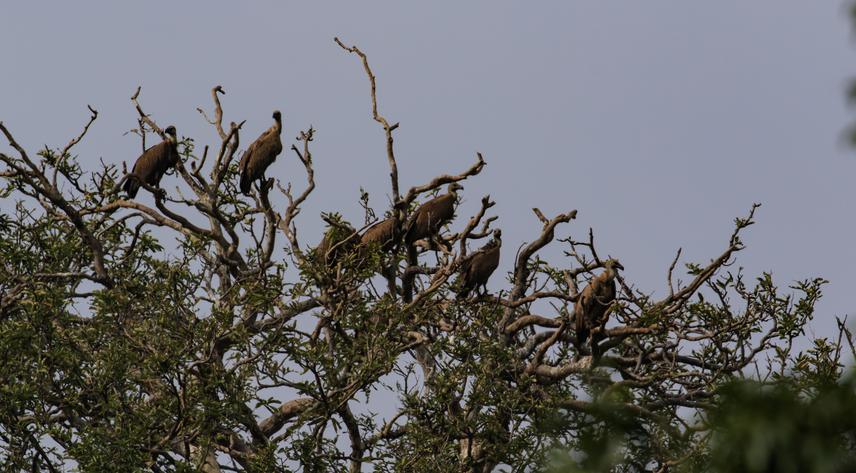Manigandan Selvaraj
The Mudumalai and Sathyamangalam Tiger Reserves (MTR and STR) support one of the largest populations of vultures in southern India (Anoop et al. 2018). These include the Critically Endangered Long-billed Vulture (LBV; Gyps indicus), Red-headed Vulture (RHV; Sarcogyps calvus) and White-rumped Vulture(WRV; Gyps bengalensis), and the Endangered Egyptian Vulture (EV; Neophron percnopterus) (Samson & Ramakrishnan 2020 ). With more than 90% population decline due to toxicity caused by non-steroidal anti-inflammatory drug (NSAID) diclofenac, vultures across India and South Asia are threatened and reduced to small populations (Prakash et al. 2003). Previous studies (including mine) have identified vulture roosting and nesting areas and potential threats from diclofenac toxicity in the region (Ramesh et al. 2011; Manigandan et al. 2021). About 68 nests of WRV, the most abundant species here, have been reported from the Sigur Plateau of MTR ( Samson & Ramakrishnan 2020). Most nests were found on Terminalia arjuna, a riparian (riverine) tree species found along the banks of the Moyar river which drains the region (Samson & Ramakrishnan 2020). While availability of nonsteroidal anti-inflammatory drug (NSAID) Diclofenac (main cause of vulture mortality) has reduced to great extent, other vulture toxic NSAIDs continue to be available and pose a threat to vultures. Changes in the distribution and regeneration of vulture nesting trees also threaten long-term vulture survival.

Vulture Roosting. © H. Byju.
This project will investigate factors affecting vulture nesting tree distribution and regeneration patterns and increase awareness among pharmacies regarding other NSAIDs harmful to vultures, for the long-term survival of these birds in the region.
The main objective of the project.
Conducting awareness workshops and pre- and post-workshop surveys.
To identify locations of trees favoured by white-rumped vultures and map them.
Measuring covariates of nesting tree distribution and regeneration
Identifying and mapping trees used by vultures for nesting and roosting in the MTR and STR
Conduct covert pharmacy surveys in and around vulture habitat.
Header: White-rumped Vulture. © H. Byju.